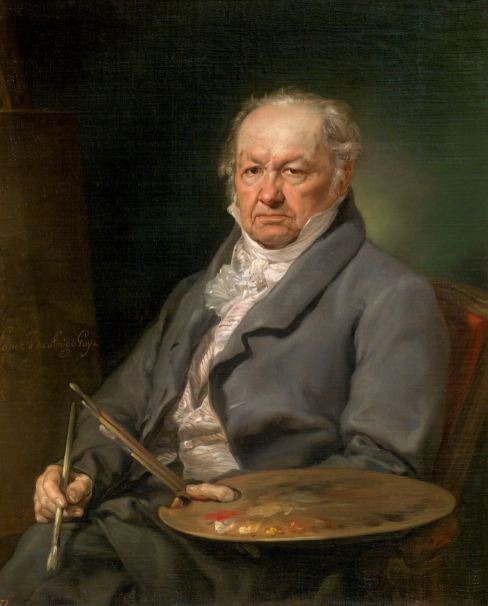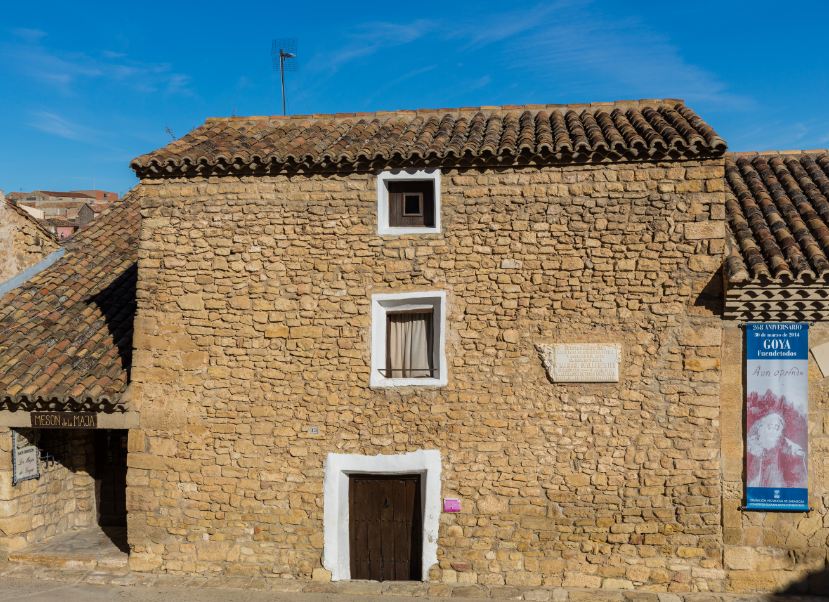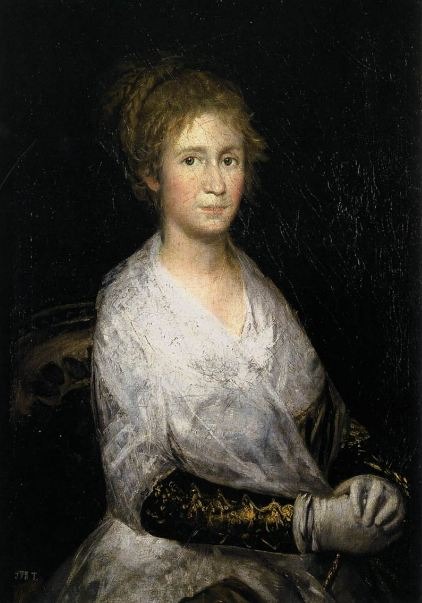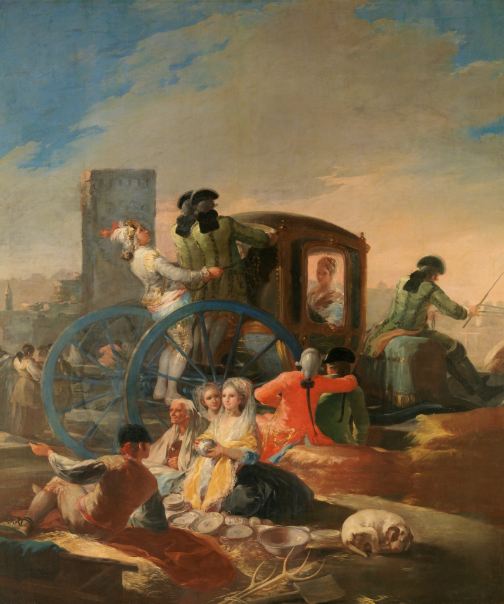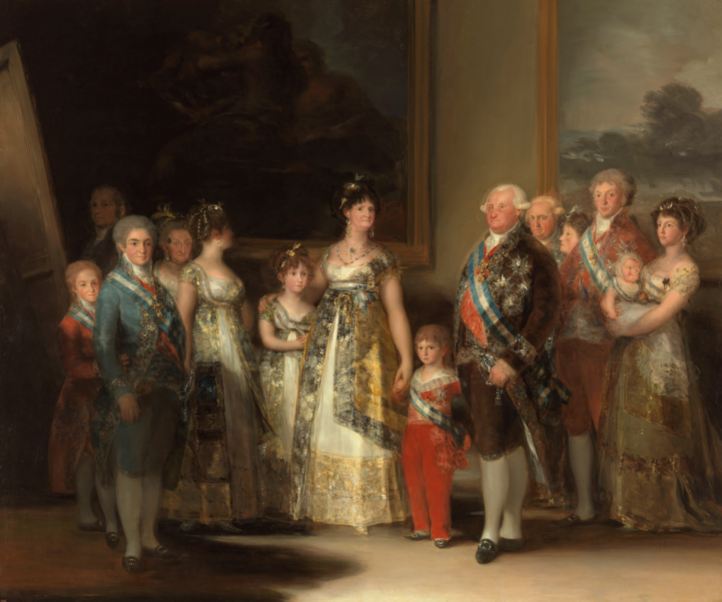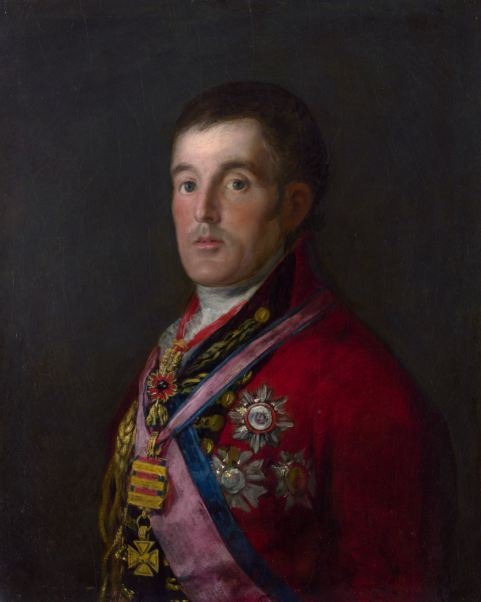Francisco Goya, whose paintings, drawings, and engravings represented contemporary historical upheavals and influenced significant 19th and 20th-century painters. He was born on Thirty March 1746 in Fuendetodos, Spain.
According to history, he died on sixteen April 1828 in Bordeaux, France.
The Disasters of War (1810–14) is a series of etchings that depicts the horrors of Napoleon’s invasion. The Naked Maja and The Clothed Maja (c. 1800–05). The 3rd-May 1808 in Madrid, or The Executions, are among his masterpieces in painting (1814).
Training and Career
Goya began his studies in Zaragoza with José Luzán y Martnez, a local artist schooled in Naples. Afterward, he studied in Madrid with Francisco Bayeu. Bayeu was the court painter whose sister he married in 1773.
In 1771, he continued his studies in Italy. He returned to Zaragoza the following year, where he had his first big contract for cathedral paintings, which he executed over the next ten years. These and other early religious artworks in Zaragoza are in the Baroque-Rococo style. It was popular in Spain. Giovanni Battista Tiepolo, a renowned Venetian painter who spent the last years of his life in Madrid (1762–70), had a strong influence on them, where he had to paint ceilings in the royal palace.
Madrid(1775-1789)
Goya’s court career began in 1775 when he painted the first of more than 60 cartoons (preparatory drawings) for the Royal Tapestry Factory of Santa Bárbara, on which he worked until 1792.
These paintings of current situations, aristocratic and popular pleasures, were started under the leadership of Anton Raphael Mengs. A proponent after Tiepolo’s death became the unchallenged art dictator at the Spanish court.
Tiepolo’s attractive style is mitigated in Goya’s early cartoons by Mengs’ teachings, particularly his concentration on simplicity. Later cartoons illustrate his developing independence from foreign traditions and the emergence of an individual style, which began with his study of works by 17th-century court painter Diego Velázquez in the royal collection.
He is known to have acknowledged three masters later in life: Velázquez, Rembrandt, and, most importantly, nature. Velázquez’s paintings oriented him to the study of nature and taught him the language of realism. Furthermore, Rembrandt’s etchings were undoubtedly a source of inspiration for his later drawings and engravings.
Goya was sick, and his illness was used against him by his rivals, who were envious of any artist who appeared to be gaining in height. Some of the cartoons, mainly the Wedding, were over eight by ten feet in size, took a toll on his physical stamina.
Goya, ever inventive, said that his illness had given him the knowledge to create more intimate and informal works. However, he found the format limited as it hindered him in capturing intricate color shifts or textures. Moreover, it was not compatible with the impasto and glazing techniques he was using on his painted works at the time.
The tapestries appear to be observations on human characteristics, fashion, and fads.
His other works include, mainly altar of the Church of San Francisco in Madrid led to his appointment as a member of the royal academy.
Court Painter
The Count of Floridablanca, King Charles III’s favorite, commissioned Goya to paint his portrait in 1783. He became acquainted with the King’s half-brother Luis and worked on pictures of the Infante and his family during two summers. During the 1780s, his circle of supporters expanded to include the Duke and Duchess of Osuna, the King, and other significant persons from the realm. In 1786, Charles III employed him on a salaried basis. This decade produced his earliest known portraits of court officials and members of the nobility, which he represented in customary 18th-century attitudes.
Period Under Charles IV
The death of Charles III in 1788, just months before the onset of the French Revolution, marked the end of Goya’s period of comparative affluence and enlightenment. With the Napoleonic conquest of Spain, the reactionary tyranny and political and social corruption that followed—under the weak and ignorant Charles IV and his crafty, dishonest queen, Maria Luisa—came to an end.
Goya became Spain’s most successful and fashionable artist under the patronage of the new ruler. He promoted him to the level of court painter; he was appointed director of the academy in 1795 (but resigned two years later due to health issues) and first royal painter in 1799. Despite his desire for official honors and worldly success, the record he left of his benefactors and the milieu in which he lived is ruthlessly penetrating. Following a deafening sickness in 1792, his painting began to take on a new character, allowing him to freely communicate the insights of his seeking eye and critical mind, as well as his newly developed gift of imagination.
He created portraits of the monarch and queen. Even as well as Spanish Prime Minister Manuel de Godoy and several other nobility. These paintings are famous for their lack of flattery; his Charles IV of Spain and His Family is a particularly harsh portrayal of a royal family. The artwork is viewed as humorous by modern interpreters. It seems to reflect the corruption that surrounded Charles IV’s reign.
His wife Louisa was supposed to wield actual influence during his rule. Goya put her in the middle of the group portrait. The artist is peering out at the audience from the back left of the painting. The painting behind the family represents Lot and his daughters, reinforcing the underlying idea of corruption and decay.
The Napoleonic Invasion and the Post-Restoration Period
In 1808 Goya was at the pinnacle of his official career. Charles IV and his son Ferdinand abdicated in short succession. Napoleon’s soldiers marched into Spain, and Napoleon’s brother Joseph was appointed as a king. Goya kept his job as a royal painter, but throughout the war, he painted both Spanish and French generals, and in 1812 he made a picture of The Duke of Wellington.
He did, however, document his responses to the invasion and the tragedies and devastating repercussions of the war in a series of etchings called The Disasters of Conflict (first published 1863), for which he drew sketches during the war. The violent and terrible occurrences that he undoubtedly witnessed are depicted in dramatic compositions—in line and aquatint—with ruthless draughtsmanship.
In 1814, Ferdinand VII was re-established after the invaders left. Goya was pardoned for his devotion to the French ruler and reinstated as the first court painter to commemorate the popular uprising in Madrid. On the 2nd May 1808 in Madrid, also known as the fight of the mamelukes. The 3rd May 1808 in Madrid, popularly known as the executions, were painted. The impressionistic style foreshadowed and affected other 19th-century French artists, particularly Édouard Manet, who was also impacted by the third May composition. After the restoration of Ferdinand VII, Goya created several portraits of the cruel tyrant, evoking the personality of the inhumane tyrant, whose repressive rule drove most of his allies and eventually Goya himself into exile.
He created few official portraits, but his self-portraits (1815) and his friends and relatives are similarly subjective. The Agony in the Garden (1819) and The Last Communion of St. Joseph of Calasanz (1819), for example, are more expressive of true devotion than any of his earlier church paintings.
On the other hand, the black paintings, which he decorated the walls of his country house, the Quinta del Sordo (1820–23), and Los proverbios or Los disparates. A series of etchings made around the same time (though not published until 1864) are nightmare visions in expressionist language that seem to reflect cynicism, pessimism, and despair.
Last Years
Goya sought permission to travel to France for health reasons in 1824, after the failure of an attempt to build a liberal government resulted in increased persecution.
His final works include genre subjects and portraits of exiled friends Don Juan Bautista de Muguiro and Leandro Fernández de Moratn.
Don José Po de Molina shows the final development of his style toward a synthesis of form and character in light and shade, without outline or detail, and with a minimum color.
Legacy
Francisco Goya was a groundbreaking artist. His vast and diverse body of work, which includes paintings, sketches, and engravings referring to practically every element of current life, depicts the political and social changes of the time.
Expressionists, Surrealists, and others admired and studied his work in the twentieth and twenty-first centuries.
Bottom Line
In today’s world, a man’s profession defines him. Many artists have an impact on people. As a result, it’s critical to stay up to date on current events. As a result, keeping up with outstanding people like Francisco Goya is critical to obtain inspiration and make it simpler to attain one’s goals.
If you want to know more about influential artist personalities, learn about Leonardo Da vinci.

